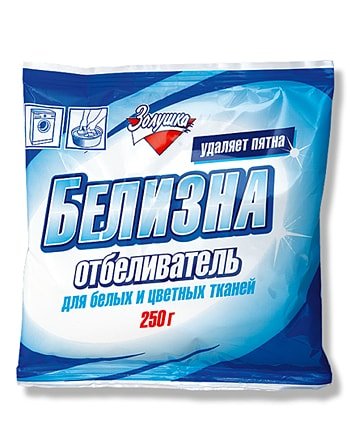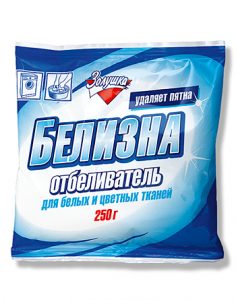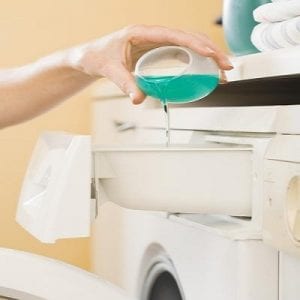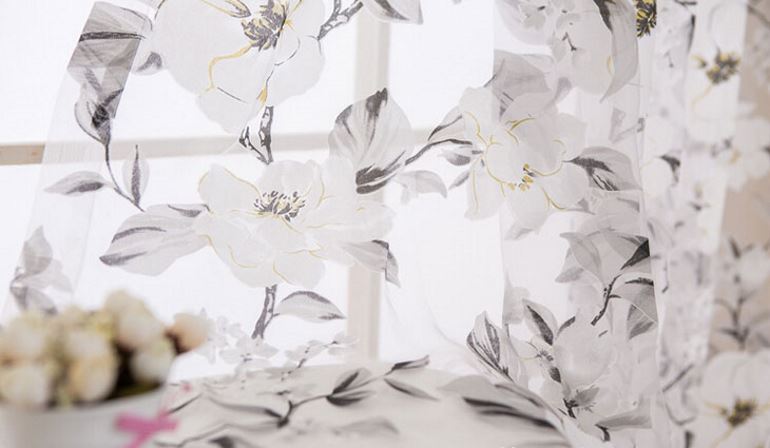Bleaching tulle at home: 9 effective ways
Tulle has long been included in modern life. Even the latest design solutions for the decoration of apartments are rarely complete without tulle. However, over time, it can lose its attractive appearance, turn yellow, and so on. This article describes how you can quickly and easily return this material to its original appearance.
Not all housewives know how to bleach tulle, although the window, covered with beautiful snow-white lace, looks just gorgeous. However, this is not always the case.
Literally after two or three years, this view becomes much worse - curtains of this kind already look far from completely white. They turn into gray products, bordered with red or orange stains. In this regard, most housewives ask quite a reasonable question, how to bleach tulle at home.

There are several ways to bleach tulle at home. Many housewives use various bleaches or stain removers to bleach the tulle.
 One of the most popular substances that can return the tulle to its original appearance is a product called "Whiteness". To whiten the tulle qualitatively, you need to prepare a solution of the correct concentration.
One of the most popular substances that can return the tulle to its original appearance is a product called "Whiteness". To whiten the tulle qualitatively, you need to prepare a solution of the correct concentration.
According to the existing instructions that apply to this product, it should be diluted in several liters of water. When a solution with the required concentration is prepared, curtains are placed there, but for no more than half an hour.
When using whiteness, you should immediately realize that this tool has a number of important disadvantages that must be taken into account before bleaching curtains. For example:
- this tool has a very specific, and often unpleasant, bleach aroma, which will have to be disposed of in the future with the help of an air freshener or a number of other similar agents;
- if whiteness turns out to be an effective means, then with a high degree of probability only with its help it will be possible to further bring the tulle into a presentable form.
Using active chemicals for whitening
It is worth noting that at home, many housewives often use products manufactured on an industrial scale. At the same time, the brand of such a product is far from always fundamental.
The use of a bleaching agent is often limited to dilution in hot or cold water in a certain proportion. After the solution is prepared, tulle is soaked in it. It should be borne in mind that the soaking time can vary from a couple of hours to a day.
 To get rid of all sorts of stains and yellowing of the tulle, you can use a variety of stain removers. Usually, these products are very concentrated, and therefore they should be applied directly to the area where some contamination has been noticed.
To get rid of all sorts of stains and yellowing of the tulle, you can use a variety of stain removers. Usually, these products are very concentrated, and therefore they should be applied directly to the area where some contamination has been noticed.
However, you can do another way: if you make a solution of a different concentration, then you can soak the curtains in it for a certain time. After that, they will have to be washed. When they dry, the positive effect will most likely be quite noticeable.
It should be borne in mind that stain removers are not suitable for every type of tulle. Some types of similar fabric are not able to withstand the effects of such agents and are simply destroyed.
To get a positive effect from the use of these synthetic cleansing substances, you must carefully study the instructions before purchasing them. This will allow you to immediately establish which type of fabric is suitable for this or that product. In addition, thanks to the instructions, it will become much easier to study the process of diluting the substance.
Several folk remedies for bleaching tulle
It is worth noting that many housewives refuse to use industrial means aimed at bleaching tulle in favor of various kinds of folk methods. There are quite a few of them today:
- digestion;
- blue;
- brilliant green;
- ammonia;
- lightweight hydrogen peroxide;
- starch;
- potassium permanganate, or ordinary potassium permanganate.
When using digestion as a bleaching technology for curtains, you do not have to use any additional substances.
 To implement such a technology, it will be quite enough to take a saucepan of a decent volume, tilt the soap into it. You can add remnants or washing powder instead. Next, the pan is completely filled with water, curtains are placed there. After that, the whole mixture is put on fire and cooked until the soap or washing powder is completely dissolved. When this happens, the curtains should be boiled for an hour.
To implement such a technology, it will be quite enough to take a saucepan of a decent volume, tilt the soap into it. You can add remnants or washing powder instead. Next, the pan is completely filled with water, curtains are placed there. After that, the whole mixture is put on fire and cooked until the soap or washing powder is completely dissolved. When this happens, the curtains should be boiled for an hour.
It should be noted that the whitening of tulle can be carried out at the expense of brilliant green, especially if it is done at home.
To use this technology correctly, take five drops of brilliant green, dissolve it in a certain amount of water. If suddenly a precipitate begins to form in the solution, then it must be filtered several times.
When the ordinary wash is finished, rinse in water with brilliant green, leave the curtains there for a few minutes. After that, without spinning, they are hung on the ropes so that all the excess liquid of the glass and curtains dries out normally.
To return the tulle to its original whiteness, one standard cap of liquid blue is pre-added to the rinse water. It is worth noting that the principle of action here will be the same as with brilliant green.
It often happens that other bleaching methods besides ammonia and peroxide will not work for some types of fabrics. The solution will be most effective if both components are added.
They are taken in a two to one ratio - one part of hydrogen peroxide is added to two parts of ammonia. In the future, both of these substances are diluted in a bucket of hot water, mixed thoroughly. After washing and rinsing, the tulle is put there for half an hour. Taking it out of there, rinse it again, squeeze it well and hang it up to dry.
A rather original method is associated with the bleaching of tulle due to potassium permanganate.
The technology for using this compound here will be as follows - first, the tulle will have to be thoroughly wetted and thoroughly soaped, using only laundry soap for this.
Then a rather concentrated solution is prepared, where the tulle is lowered for about half an hour, but sometimes it takes more time, but not more than forty minutes. After that, rinse, squeeze and hang out to dry.
You can use a compound such as starch to bleach the tulle. In this case, the procedure will be very simple - the starch is diluted in cold water, tulle is placed there for a few minutes, after which it is hung in its place.
After one or two days, it should be washed again. Due to the starch, various contaminants can be removed quite simply.
Original whitening methods
Today, many people use saline solution to remove even stubborn dirt. In this case, there are two technologies.
- First, dust is removed from the fabric (this is done by rinsing or shaking out), then the curtains are placed in a solution of powdered salt - no more than five tablespoons of table salt and a small amount of washing powder are added to five liters of water. Then the tulle is placed there, where it is left for several hours, but it is best to leave it overnight. When a sufficient amount of time has passed, the fabric is thoroughly washed and then rinsed and dried.
- The second method is as follows: after the wash is completed, the curtains should be placed in a solution, where about four tablespoons of salt was previously added. It is necessary to keep the curtains there for no more than 15 minutes. After such an operation, you should not rinse the fabric, it is simply squeezed out and hung out.

If the tulle was made of nylon-based material, then it should be bleached in a more gentle mode. In this case, you should not use chemical compounds, since after them the fabric will acquire a very unpresentable look. Among the traditional methods, the most effective will be those that can be used in cold water.
In particular, it is quite acceptable to use brilliant green, blue or potassium permanganate. It is worth noting that it is quite possible to use a salt solution, and it can be used both during washing and while rinsing.
In addition, to maintain its shape, nylon tulle must be carefully treated with a starch solution. Otherwise, the tulle will bulge, often it comes in spots, so you should work with it carefully.
Conclusions: you can bleach tulle using various methods, both with the use of different special chemical compositions, and through proven folk methods. The main thing during bleaching is to preserve the structure of the fabric so that it does not deteriorate.
